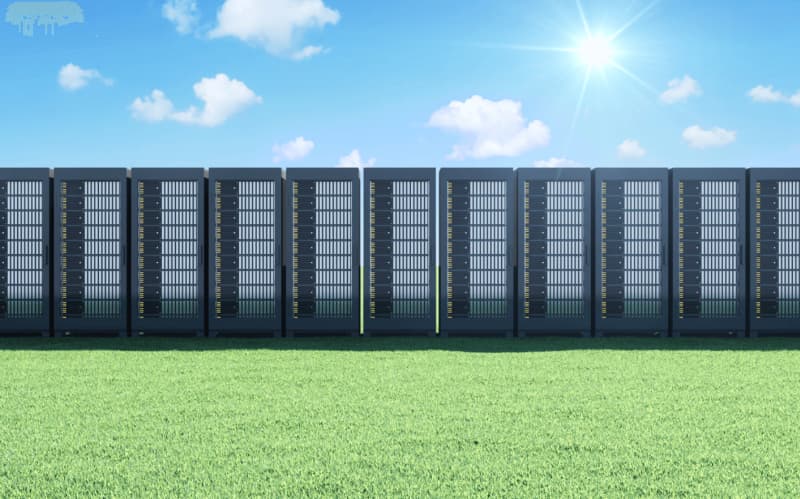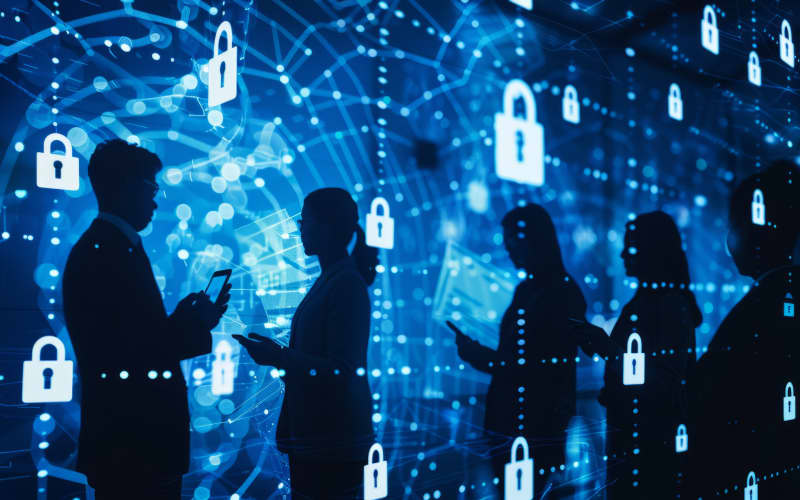The cutting-edge technology and state-of-the-art protected premises used in today’s high-performance servers and data centers create significant power demands.
In fact, data centers account for around 17% of total ICT electricity consumption. But fear not, the most up-to-date data centers also boast impressive credentials in energy efficiency and are designed to reduce the environmental impact of large-scale IT operations.
Read on to find out how, by using an eco-friendly data center, you can boost your businesses green credentials and make significant gains in reducing the carbon footprint of your own business and help achieve targets on sustainability.
The growth of managed data centers
Managed data centers have been at the heart of a significant shift in information technology.
From cloud computing to colocation, it has been the growth of commercial data centers that have allowed business IT to migrate away from premises-based infrastructure to hosted services run remotely by third-party providers.
They help businesses run their IT infrastructure more efficiently and effectively than they would be able to on premises, driving costs down and performance up.
Why do we need green data centers?
We are becoming increasingly conscious about the impact our energy consumption, particularly electricity, has on the environment. We now know that the burning of fossil fuels to generate electricity is a major contributor not only to air pollution, but also to increased levels of carbon dioxide in the atmosphere, which is linked to global warming. And yet all the time, our consumption of electricity keeps going up and up.
The digital revolution of the past 20 years has been a major factor in this acceleration. The world no longer relies on electricity just to power machines and appliances. It needs it to keep the vast data exchange networks which define the Internet Age running. Every smartphone, every laptop, every IoT-connected smart device is constantly streaming data to and from these global networks. Be it an IM message, a photograph posted to social media, new content added to a company website or an entire business backhaul being run on remote servers, everything we do online adds to the bottomless ocean of data the digital world generates. Ultimately, all of this data requires a physical home, a server to run on. And these physical resources rely on electricity.
It is forecast that ICT will account for 20% of global electricity consumption by 2025. By 2040, it could be responsible for 14% of carbon emissions. Data centers are a key contributor to this trend, accounting for around 17% of total ICT electricity consumption. High-performance server equipment creates significant power demands in its own right. Data centers also need energy-hungry cooling systems to control the heat generated by servers, they also need lighting, state-of-the-art surveillance and security systems. That all contributes to the fact that even a moderately sized data center can consume the same amount of energy as a small town.
How does an eco data center work?
While we continue to rely on fossil fuels to generate our electricity, a key focus of reducing the environmental impact of our energy consumption has to be on making what we use as efficient as possible. One of the challenges with data centers is that we now expect our IT assets to be available 24/7, 365 days a year, so servers have to run around the clock without rest. Without taking appropriate measures, this in itself causes a great deal of inefficiency, with servers losing as much as 90% of the energy they consume as heat.
Green data centers, therefore, focus their attention at drastically improving the efficiency of energy consumption in the following ways:
- Smart resource allocation: In a traditional data center setup, if a service requires additional server resources, there is an automated system which brings other servers online to take the strain. The problem with this is that many servers – up to 20% in some data centers – can be left dormant for long periods of time, still on and consuming energy but simply waiting until they might be needed. Smart automation systems, some using AI, can improve this by switching off servers when they are not being used.
- Virtualization: Virtualization allows physical resources across different servers to be shared efficiently across different services. Whereas a ‘bare metal’ setup might have one service running on one server, virtualization slices up all the available resources on a single server into virtual machines – effectively creating multiple virtual servers on the same hardware from which you can run multiple, completely independent services at once. It also means that little packets of capacity from different servers can be bundled into the same virtual machine, meaning all available resources end up getting used. The overall number of servers required, and therefore the amount of energy consumed, is reduced.
- Temperature control: Cooling creates a huge energy burden on data centers. The amount of electricity required to power fans and temperature control systems can often double the amount used to run the servers themselves. Finding ways to keep servers at safe temperatures without needing such high energy demands is therefore a key way to make data centers more eco-friendly. Solutions include designing airflow through data centers so hot and cooler air interchange naturally, maintaining a constant balance. Some more innovative examples include using sea water to cool server rooms. Temperature control for extra efficiency does not all have to be about cooling, either. Maintaining a slightly higher ambient temperature, perhaps by harvesting some of the heat given off by servers, can help the machinery to run more efficiently, too.
- Eco servers: Finally, environmentally conscious data center operators are also focusing on upgrading their hardware to more energy efficient servers. The key issue with energy efficiency in a server is the dissipation of power from a CPU – i.e. the energy that is lost from heat during processing. The latest server technologies seek to improve on this through choice of materials for components and casing, and through case design.
What are the benefits of eco-friendly data centers to my business?
For any business that takes corporate social responsibility seriously, efforts to engender sustainable, responsible business practices do not stop at the door. Conscientious businesses are also very much aware of the credentials of their suppliers, and will choose partners based on how well they fit in with their own vision.
Whether you are looking to build a private cloud for your business through dedicated server hosting or co-locate, the data center should be considered a supplier like any other – regardless of whether you are going through an intermediary service provider. Therefore, if your business has policies on the environment and sustainability, you should be checking to see how green your data center is, and how well it fits with your policy.
Eco data centers allow you to boost your own green credentials. A 30% saving in energy consumption over the lifespan of a standard server (averaged out at four years) can save up to one ton in carbon emissions. And aside from the environmental benefits, there are financial advantages, too – servers and data centers that consume less power cost less to run.
For more information about M247 data centers, contact us today





